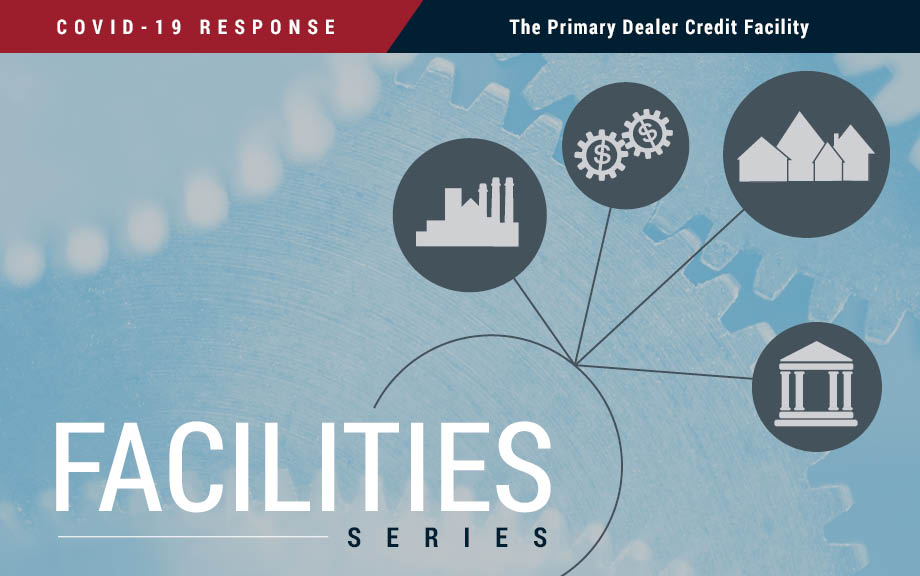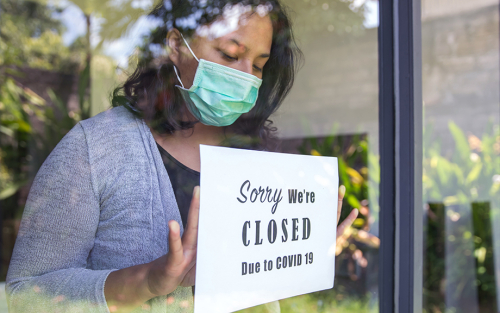State‑of‑the‑Field Conference on Cyber Risk to Financial Stability

The Federal Reserve Bank of New York partnered with Columbia University’s School of International and Public Affairs (SIPA) for the second annual State-of-the-Field Conference on Cyber Risk to Financial Stability on December 14-15, 2020. Hosted virtually due to the COVID-19 pandemic, the conference took place amidst the unfolding news of a cyberattack against a major cybersecurity vendor and software vendor, underscoring vulnerabilities from cyber risk.
Did Subsidies to Too‑Big‑To‑Fail Banks Increase during the COVID‑19 Pandemic?

New Liberty Street Economics analysis by Asani Sarkar investigates whether the COVID-19 pandemic has led to an increase in implicit TBTF subsidies for large firms.
Did Too‑Big‑To‑Fail Reforms Work Globally?

Once a bank grows beyond a certain size or becomes too complex and interconnected, investors often perceive that it is “too big to fail” (TBTF), meaning that if the bank were to fail, the government would likely bail it out. Following the global financial crisis (GFC) of 2008, the G20 countries agreed on a set of reforms to eliminate the perception of TBTF, as part of a broader package to enhance financial stability. In June 2020, the Financial Stability Board (FSB; a 68-member international advisory body set up in 2009) published the results of a year-long evaluation of the effectiveness of TBTF reforms. In this post, I discuss the main conclusions of the report—in particular, the finding that implicit funding subsidies to global banks have decreased since the implementation of reforms but remain at levels comparable to the pre-crisis period.
What Do Financial Conditions Tell Us about Risks to GDP Growth?
The Primary Dealer Credit Facility

On March 17, 2020, the Federal Reserve announced that it would re-establish the Primary Dealer Credit Facility (PDCF) to allow primary dealers to support smooth market functioning and facilitate the availability of credit to businesses and households. The PDCF started offering overnight and term funding with maturities of up to ninety days on March 20. It will be in place for at least six months and may be extended as conditions warrant. In this post, we provide an overview of the PDCF and its usage to date.
How Does Supervision Affect Bank Performance during Downturns?

New research finds that there is a cyclical nature to the benefits of bank supervisory attention: in normal times, the benefits are smaller, but during downturns the more closely supervised banks exhibit better loan performance and lower earnings volatility.
Understanding Heterogeneous Agent New Keynesian Models: Insights from a PRANK

To shed light on the macroeconomic consequences of heterogeneity, Acharya and Dogra develop a stylized HANK model that contains key features present in more complicated HANK models.
Have the Risk Profiles of Large U.S. Bank Holding Companies Changed?

After the global financial crisis, regulatory changes were implemented to support financial stability, with some changes directly addressing capital and liquidity in bank holding companies (BHCs) and others targeting BHC size and complexity. Although the overall size of the largest U.S. BHCs has not decreased since the crisis, the organizational complexity of these same organizations has declined, with less notable changes being observed in their range of businesses and geographic scope (Goldberg and Meehl forthcoming). In this post, we explore how different types of BHC risks—risks that can influence the probability that a BHC is stressed, as well as the chance of systemic implications—have changed over time. The results are mixed: Levels of most BHC risks currently tend to be higher than in the years immediately preceding the crisis, but are markedly lower than the levels seen during and immediately following the crisis.
What’s in A(AA) Credit Rating?

Rising nonfinancial corporate business leverage, especially for riskier “high-yield” firms, has recently received increased public and supervisory scrutiny. For example, the Federal Reserve’s May 2019 Financial Stability Report notes that “growth in business debt has outpaced GDP for the past 10 years, with the most rapid growth in debt over recent years concentrated among the riskiest firms.” At the upper end of the credit spectrum, “investment-grade” firms have also increased their borrowing, while the number of higher-rated firms has decreased. In fact, there are currently only two U.S. companies rated AAA: Johnson & Johnson and Microsoft. In this post, we examine recent trends in the issuance of investment-grade corporate bonds and argue that the combination of increased BAA issuance and virtually nonexistent AAA issuance both reduces the usefulness of the BAA–AAA spread as a credit risk indicator and poses a financial stability concern.
Banking System Vulnerability: Annual Update

A key part of understanding the stability of the U.S. financial system is to monitor leverage and funding risks in the financial sector and the way in which these vulnerabilities interact to amplify negative shocks. In this post, we provide an update of four analytical models, introduced in a Liberty Street Economics post last year, that aim to capture different aspects of banking system vulnerability.











 RSS Feed
RSS Feed Follow Liberty Street Economics
Follow Liberty Street Economics